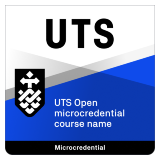This course is structured into four modules. Each module includes self-study materials. Module 3 includes an all-day field trip to Royal National Park, NSW.
Module 1 - Plant Identification
Students learn fundamental knowledge of plant traits needed for successful plant identification. The idea of pattern recognition is introduced as an approach to identify different plant families in the field. Students explore how to use a dichotomous key in plant identification and learn important botanical terminology required for keying out plant species.
Module 2 - Vegetation Survey Methods
The concept of a plant assemblage is introduced and students learn about the range of survey techniques that are used to capture how assemblages vary across space and through time.
Module 3 - Field Assessments of Biodiversity
Students attend a one-day field trip to perform their own plot-based vegetation survey and collect ecological data on plant assemblages. Prior to the fieldwork, students learn about health and safety requirements for fieldwork.
Module 4 - Communication of Biodiversity Values.
Students learn how to clean and explore their field-collected data. They then write up their field research to communicate the key biodiversity values of the plant assemblages.
You will be working with an Australian expert in biodiversity who will support your learning and engagement online. Teaching resources have been designed by a lead academic and a team of experts from the Faculty of Science.














